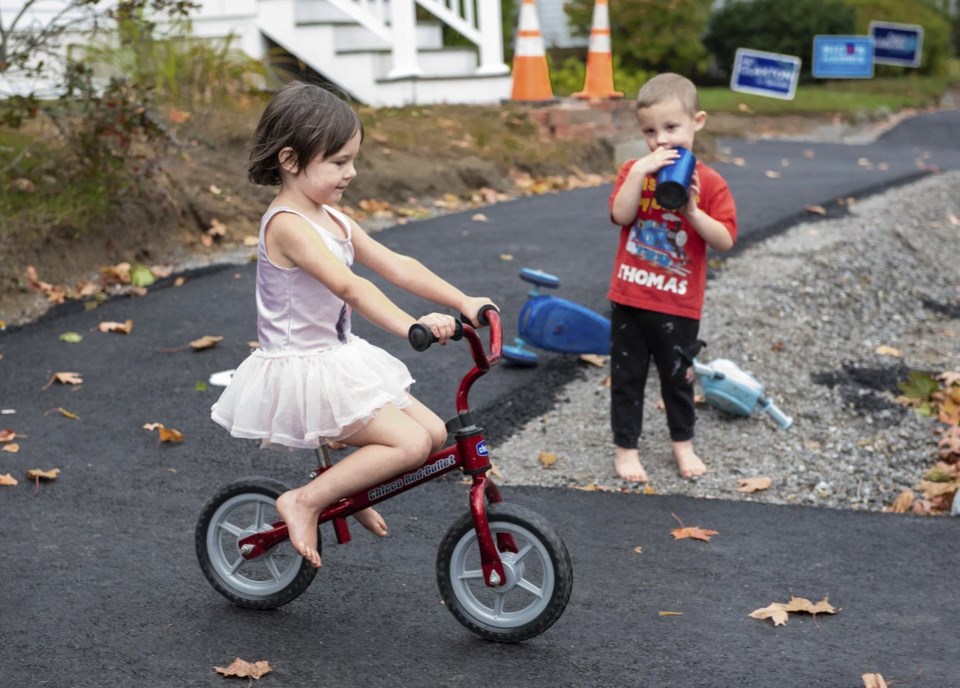When Michael Natividad learned to ride a bike at 7 or 8 years old, he knew his training wheels were ready to come off when he leaned on them while zipping around corners.
His daughter, on the other hand, was barely 3 when she sped away from him on her tiny bicycle, he said, admitting to feeling a bit robbed of a special moment.
“I kept thinking of that opportunity holding her up, but I did it for all of maybe one minute,” said Natividad, of Rohnert Park, California. “I was looking forward to that for three years.”
A big difference was that Loralani, now 4, never used training wheels. Instead, like an increasing number of children, she had learned to ride a balance bike first, at around 2.
Balance bikes look like miniature bicycles without pedals. An adjustable seat can be lowered for children to put their feet on the ground. Some models come with attachable pedals, so kids can use them as their first real bike when ready.
Now, as for children as young as 8 months old, the question is, at what age should kids learn to ride a bike?
It's not all about calendar age
Annie Pezalla, a professor of human development at Macalester College in St. Paul, Minnesota, said the 8-month marker “raised my eyebrows” but she saw the logic behind the claim. That’s because the part of the brain largely responsible for coordination, the cerebellum, goes through a huge growth spurt from about 6 to 8 months.
Still, Pezalla recommended caution. Rather than a particular age, she said, it is more important to consider milestones that occur at different times for different children, such as holding their head up on their own and taking a few steps while grasping onto something.
“Once those milestones have been reached, then I think it’s the perfect time to get on one of those balance bikes,” she said, noting they usually happen between 9 and 18 months.
She added the caveat that early attempts should be made in a very safe space, like a carpeted room.
What about training wheels?
Pezalla said training wheels are going out of style because they don’t teach proprioception, the body's ability to understand where it is in space. It's what allows one, for example, to walk without thinking about each step. So when training wheels come off, kids have to relearn how to balance.
Research also shows that children who start with balance bikes get a leg up, said Cristiana Mercê, a sport sciences professor at Santarém Polytechnic University in Portugal. Over five studies published on balance bikes, Mercê and her team have demonstrated that balance-bike users learn to ride regular bikes in less time, and up to two years younger, than peers using training wheels.
Bikes with training wheels are too large for most young children. Balance bikes offer the chance to explore many behaviors that training wheels don’t, such as pushing with both feet, one foot, and gliding without pedaling, she said.
The variety of movements makes it easier to transition to a traditional bicycle, Mercê said. “You can balance without pedaling, but you can’t pedal without balancing.”
When should a child switch to a pedal bike?
The American Academy of Pediatrics’ doesn’t specify an age, instead saying most kids learn to ride at their own pace between 4 and 7. It explicitly warns against “purchasing a larger bike for the child to ‘grow into.'”
But the guidance hasn’t been updated since 2011, years before balance bikes became more popular.
Deferring to the AAP’s age range, Pezalla said the transition to a pedal bike will probably occur as a natural progression with little instruction. At first, children straddle and walk with the balance bike, then sit and walk and finally, run, sit and glide.
“It should go in stages with no expectation that, gosh, an 8 month old is going to be gliding on this thing,” she said.
After that, the gap between gliding and pedaling is negligible, Pezalla said, noting that she wishes she would have known to teach her 10-year-old twin boys to ride with balance bikes. Learning these motor skills early conveys several benefits that transcend a new way to get around.
“It represents a deal of independence and self-confidence in a way that’s not possible any other way,” she said. “And I think teaching kids how to ride a bike earlier has all sorts of benefits, not only to their coordination, their balance, but their sense of self-confidence and agency as well.”
EDITOR’S NOTE: Albert Stumm writes about food, travel and wellness. Find his work at
Albert Stumm, The Associated Press



